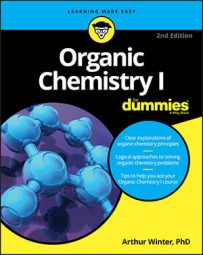Elimination reactions often compete with substitution reactions. As in substitution reactions, one possible mechanism for an elimination reaction is second-order elimination, or the E2 mechanism. The general form of an elimination reaction is shown in the first figure. In this reaction, a substrate (typically, an alkyl halide) eliminates one equivalent (unit) of acid to make an alkene.

Second-order elimination is called the E2 reaction. Like the SN2 mechanism, the E2 mechanism takes place in a single step, as shown in the next figure. A base plucks off a proton on a carbon adjacent to the leaving group, forming the double bond and giving the leaving group the boot.

One requirement of the E2 reaction is that the hydrogen to be eliminated and the leaving group must typically be in anti-periplanar geometry. To be anti-periplanar means that the hydrogen and the leaving group (as well as the two carbons that will form the double bond) must be on the same plane and on opposite faces of the carbon-carbon bond, as shown in the figure.
The rate equation for an E2 reaction is as follows: rate = k[base][substrate]. Because the base is included in the rate equation, the base strength affects the rate of the reaction. The E2 reaction requires a strong base, and is the most common pathway for elimination reactions.

